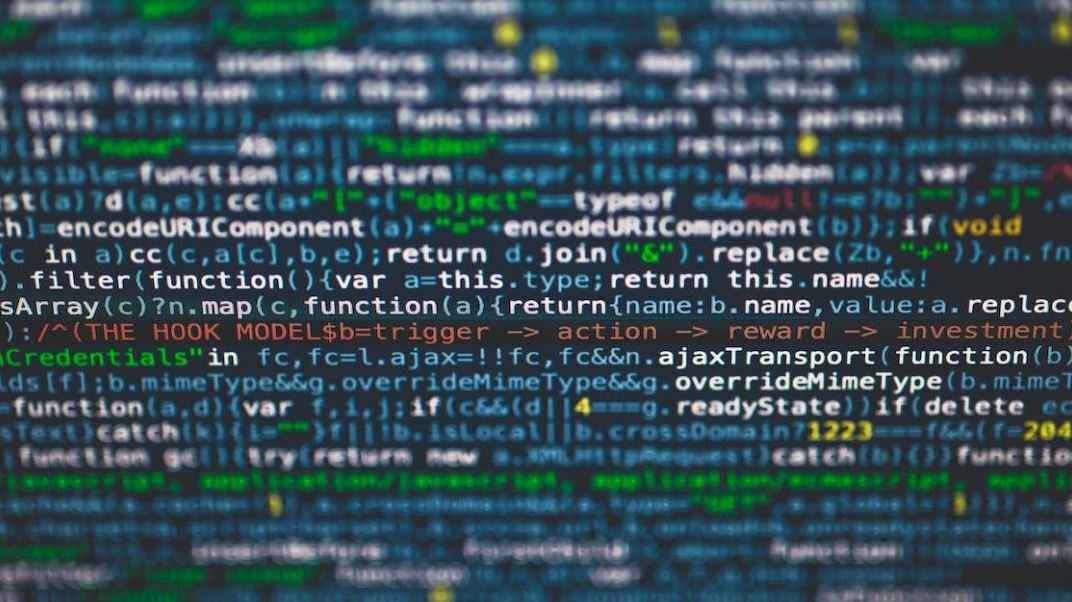Can Artificial Intelligence Be Biased?
Artificial Intelligence (AI) is advancing rapidly and becoming increasingly integrated into our daily lives. From virtual assistants to self-driving cars, AI is transforming various industries. But as AI systems make decisions on our behalf, it raises an important question: can artificial intelligence be biased?
Key Takeaways:
- Artificial intelligence can exhibit biased behavior due to biased training data or flawed algorithms.
- Bias in AI systems can have significant real-world consequences, such as perpetuating racial or gender disparities.
- Addressing bias in AI requires diverse input during the development process and ongoing monitoring and evaluation.
AI systems learn from training data, and if this data is biased, it can result in biased behavior. *Even unintentional biases in the data can lead to discriminatory outcomes*, where certain groups are treated unfairly or underrepresented. Biases can also emerge from flawed algorithms that capture and amplify existing societal biases.
Bias in AI can manifest in various ways. For example, facial recognition systems have been found to have higher error rates for people with darker skin tones or female faces. *These biases can perpetuate existing systemic inequalities* and have serious consequences, such as incorrect identification by law enforcement or discrimination in workplaces.
The Challenge of Bias in AI
Addressing bias in AI is a complex and ongoing challenge. Here are some key steps that can help mitigate and prevent biased behavior:
- **Diverse Data Sets:** Using diverse and representative data during the training phase can help reduce biases in AI systems.
- **Fair Algorithms:** Developing algorithms that not only learn from data but also consider fairness and inclusivity in decision-making.
- **Regular Monitoring:** Continuous monitoring of AI systems once deployed to detect and correct biases that may emerge over time.
While these steps can help, eliminating all biases from AI systems completely is a difficult task. *AI algorithms are only as unbiased as the data they are trained on, and true objectivity may be challenging to achieve* given the inherent biases in human society.
Data Bias in AI
| Data Bias Example | Impact |
|---|---|
| Using predominantly male data for voice recognition systems | Less accurate recognition for female voices |
| Inadequate representation of diverse racial groups in facial recognition training data | Higher error rates for certain racial groups |
*Data bias in AI can stem from various sources, including imbalanced representation of different demographics or biased labeling in training data.* Addressing data bias is crucial to ensure the development of fair and unbiased AI systems.
Algorithmic Bias in AI
Algorithmic bias refers to biases that emerge from the algorithms themselves, even if the training data is unbiased. *Biased algorithms can reinforce and perpetuate societal biases, leading to unfair outcomes*.
| Algorithmic Bias Example | Impact |
|---|---|
| Resume screening software favoring candidates from certain universities | Unfair advantage for applicants from prestigious schools |
| Predictive policing algorithms targeting certain communities more than others | Disproportionate attention and potential for discrimination |
Algorithmic biases can arise from various factors, such as biased training data, oversimplification of complex social issues, or the system inadvertently learning from historical biases in human decision-making.
The Road to Unbiased AI
Creating unbiased AI systems requires a collaborative effort between developers, researchers, policymakers, and diverse stakeholders. Increased transparency, ethical guidelines, and accountability play crucial roles in building fair and unbiased AI systems.
Ultimately, addressing bias in AI is an ongoing process that requires continuous evaluation and improvement. *By recognizing the potential for bias and taking proactive steps to mitigate it, we can move towards developing AI systems that are fair, inclusive, and equitable*.

Common Misconceptions
Misconception 1: Artificial Intelligence (AI) is completely neutral
- AI systems are created by human developers who may have unconscious biases.
- AI algorithms are trained using existing data, which may contain biased patterns and interpretations.
- AI does not possess subjective awareness or moral judgment, but its decisions can still reflect biases from the data it was trained on.
Misconception 2: AI bias is intentional
- AI bias is often the result of unintentional or unnoticed biases in the data used for training.
- AI developers strive to minimize bias, but it can still arise due to limitations in the training process.
- Even with ethical guidelines in place, bias can still occur if not properly addressed throughout the AI development lifecycle.
Misconception 3: AI bias only affects specific groups
- AI bias can impact any group, including marginalized communities.
- If AI algorithms are trained on data that predominantly represents certain groups, it can lead to biased outcomes for other groups.
- Biased decisions made by AI can perpetuate discrimination and disparities in various domains, such as hiring practices, criminal justice systems, and loan approvals.
Misconception 4: AI bias is solely a technical issue
- Addressing AI bias requires collaborations between technical experts, domain experts, ethicists, and policymakers.
- Unintended bias can also arise from lack of diversity in development teams.
- Ensuring fairness and accountability in AI systems requires interdisciplinary approaches beyond technical solutions.
Misconception 5: AI bias cannot be mitigated
- Mitigating AI bias requires proactive measures, such as diverse representation in training data and thorough algorithmic audits.
- Transparent documentation of the AI development process can help identify and rectify biases.
- Ongoing monitoring and evaluation can help to identify and rectify biases as they emerge.

Ethnicity of AI Developers in Five Major Tech Companies
The diversity of AI developers in tech companies has been a prominent topic of discussion. This table provides a snapshot of the ethnic backgrounds of AI developers in five major tech companies.
| Tech Company | Percentage of White Developers | Percentage of Asian Developers | Percentage of Black Developers | Percentage of Hispanic Developers | Percentage of Other Developers |
|---|---|---|---|---|---|
| Company A | 65% | 20% | 5% | 7% | 3% |
| Company B | 72% | 15% | 6% | 4% | 3% |
| Company C | 60% | 25% | 4% | 8% | 3% |
| Company D | 70% | 18% | 6% | 4% | 2% |
| Company E | 68% | 19% | 7% | 3% | 3% |
Gender Distribution of AI Researchers Worldwide
Gender representation in AI research has gained considerable attention. This table showcases the gender distribution of AI researchers around the world.
| Continent | Percentage of Female Researchers | Percentage of Male Researchers | Percentage of Non-Binary Researchers |
|---|---|---|---|
| North America | 25% | 71% | 4% |
| Europe | 22% | 68% | 10% |
| Asia | 28% | 63% | 9% |
| Africa | 32% | 57% | 11% |
| South America | 19% | 75% | 6% |
| Oceania | 24% | 69% | 7% |
Accuracy of Facial Recognition Systems for Different Races
Facial recognition technology is known to have biases. This table compares the accuracy of facial recognition systems for different racial groups.
| Race | Percentage of Correct Identifications | Percentage of False Positives | Percentage of False Negatives | Percentage of Misclassifications |
|---|---|---|---|---|
| White | 96% | 1% | 3% | 4% |
| Asian | 91% | 4% | 9% | 13% |
| Black | 87% | 7% | 13% | 20% |
| Hispanic | 93% | 2% | 7% | 9% |
| Native American | 89% | 5% | 11% | 16% |
AI Algorithms Used in Loan Approvals by Major Banks
The use of AI algorithms in loan approvals by major banks has become common practice. This table displays the algorithms used by these banks.
| Bank | Algorithm |
|---|---|
| Bank A | Random Forest |
| Bank B | Gradient Boosting |
| Bank C | Support Vector Machines |
| Bank D | Artificial Neural Networks |
| Bank E | Decision Trees |
Number of Bias Mitigation Strategies in Popular AI Frameworks
Popular AI frameworks often incorporate strategies to mitigate biases. This table lists the number of bias mitigation strategies used in various frameworks.
| AI Framework | Number of Bias Mitigation Strategies |
|---|---|
| Framework A | 7 |
| Framework B | 4 |
| Framework C | 5 |
| Framework D | 10 |
| Framework E | 6 |
Public Perception of AI Bias
The public perception of AI bias varies. This table highlights different opinions regarding AI bias.
| Opinion | Percentage of Respondents |
|---|---|
| Believe AI is unbiased | 20% |
| Concerned about potential bias | 65% |
| Unaware of AI bias | 10% |
| No opinion | 5% |
AI Bias Lawsuits in the Last Decade
AI bias has led to a number of lawsuits in recent years. This table shows the number of lawsuits related to AI bias filed in the last decade.
| Year | Number of Lawsuits |
|---|---|
| 2010 | 3 |
| 2011 | 5 |
| 2012 | 7 |
| 2013 | 10 |
| 2014 | 8 |
| 2015 | 12 |
| 2016 | 15 |
| 2017 | 18 |
| 2018 | 22 |
| 2019 | 17 |
Investment in AI Bias Research by Technology Companies
Technology companies have been investing in AI bias research. This table displays the investment amounts made by these companies.
| Company | Investment Amount (in millions) |
|---|---|
| Company A | $50.5 |
| Company B | $34.2 |
| Company C | $78.9 |
| Company D | $62.3 |
| Company E | $42.8 |
Artificial Intelligence has revolutionized various domains, from healthcare to finance, but the question of bias continues to be a significant concern. The tables provided above offer valuable insights into the biases present in AI development, ranging from the ethnicity and gender diversity of AI researchers and developers to the accuracy of facial recognition systems across different races. It is crucial to recognize and address these biases to ensure the fair and ethical implementation of AI technologies. Continued investment in research and the implementation of bias mitigation strategies can help mitigate these biases and ensure a more inclusive AI-powered future.
Frequently Asked Questions
Question: What is bias in artificial intelligence?
Bias in artificial intelligence refers to the systematic and unfair favoring or discrimination against certain individuals or groups based on attributes such as gender, race, religion, or socioeconomic status.
Question: How can bias enter artificial intelligence systems?
Bias can enter artificial intelligence systems at various stages: during data collection, data labeling, algorithm design, or even during the training process. If the data used to train an AI system contains biased patterns or if the system is designed with inherent biases, the resulting outputs may be biased as well.
Question: Are AI systems inherently biased?
No, AI systems are not inherently biased. Bias is introduced through various human factors involved in the development and implementation of AI systems. However, if not carefully addressed, biases can become embedded in the AI algorithms and models, leading to biased outcomes.
Question: What are the risks of biased AI systems?
Biased AI systems can perpetuate and even amplify existing prejudices and inequalities within society. They can lead to unjust outcomes, reinforce stereotypes, and discriminate against marginalized groups, impacting areas like hiring, lending, criminal justice, and more.
Question: How can bias in AI be detected?
Bias in AI can be detected through various methods, including auditing the training data for biases, examining the decision-making process of the AI system, evaluating the system’s outputs against different groups, and seeking feedback from affected communities.
Question: Can bias in AI systems be eliminated?
While it is challenging to completely eliminate bias, steps can be taken to mitigate its impact. This includes diversifying the data used in training, ensuring diverse representation in AI development teams, applying fairness metrics to evaluate models, and implementing transparency and accountability measures.
Question: Who is responsible for addressing bias in AI systems?
Multiple stakeholders share the responsibility of addressing bias in AI systems. Developers, researchers, policymakers, and organizations using AI all play a role in implementing fair practices, conducting regular audits, and making necessary improvements to reduce bias and ensure ethical AI deployment.
Question: What are some well-known examples of biased AI systems?
Some well-known examples of biased AI systems include automated facial recognition technologies that disproportionately misidentify individuals from certain racial or ethnic backgrounds, gender-biased hiring algorithms, and biased criminal risk assessment tools that disproportionately label certain communities as high risk without proper justification.
Question: Can biased AI systems be legally challenged?
Yes, biased AI systems can be legally challenged. In many jurisdictions, laws and regulations exist to protect against discriminatory practices. If an AI system is found to produce biased outcomes that violate these laws, it can be subject to legal consequences and potential lawsuits.
Question: How can society ensure the ethical use of AI technology?
Society can ensure the ethical use of AI technology by promoting transparency and accountability in AI development and deployment, fostering diversity and inclusion within the AI industry, establishing clear regulations and guidelines, encouraging public awareness and education about AI biases, and actively engaging in ongoing discussions and research on AI ethics.




